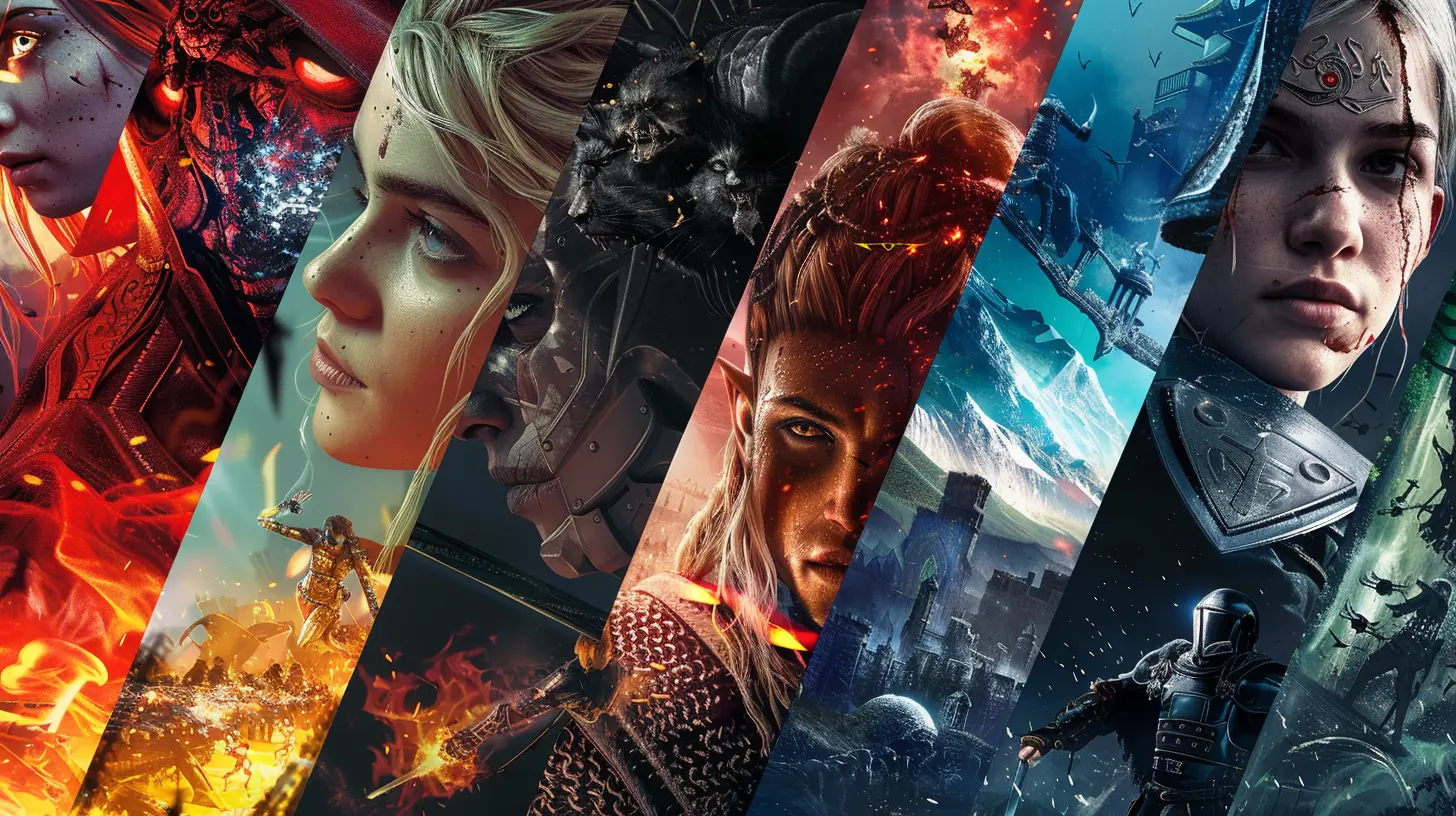Crowdfunding for Board Games vs. Video Games: Key Differences Every Developer Should Know
24 April 2025
When it comes to bringing your game idea to life, crowdfunding platforms like Kickstarter and Indiegogo feel like a developer’s playground. But here’s the thing: crowdfunding for board games and video games? They're not the same beast. Even though both fall under the "games" umbrella, the approach, audience, and expectations are as different as night and day.
If you're thinking about taking your board game or video game to crowdfunding, you need to know the ins and outs of each. Why? Because understanding these subtle (and not-so-subtle) differences can make the difference between a campaign that soars and one that crashes before takeoff. So, buckle up, because we’re diving into the key differences you must know. 
The First Big Hurdle: Tangibility vs. Intangibility
Here’s a question for you: What’s easier to sell—something people can physically see and imagine themselves playing, or something that’s primarily digital and doesn’t exist yet?Board Games: The Beauty of a Tangible Product
Board games have a massive advantage here. When potential backers see your board game prototype, they can already picture themselves gathered around a table, rolling dice, drawing cards, and laughing with friends. Board games are physical, touchable, and relatable. That's a huge selling point for crowdfunding.You can show off miniatures, dice designs, or even the box art, and people will start drooling over it. It's like walking through a bakery and smelling fresh bread—and everyone loves bread.
Video Games: The Challenge of the Not-Yet-Real
Now, let’s talk video games. Most of the time, you’re asking people to back something that doesn’t fully exist yet. Sure, you might have a trailer, screenshots, or a demo, but the finished game? That could be months, if not years, away.This makes it harder to convince people. They’re essentially giving money for a promise. And as much as gamers are passionate, they’ve also been burned before by unfinished games or poor execution (hello, Kickstarter horror stories). Trust is king here—and it’s not easily won. 
The Audience: Who’s Actually Backing Your Campaign?
Every crowdfunding campaign needs a target audience, and trust me—board gamers and video gamers are not cut from the same cloth.Board Game Crowdfunding: A Community of Collectors
Board game enthusiasts are a unique breed. They love the idea of exclusivity: custom game pieces, Kickstarter-only cards, fancy deluxe editions. These little extras can seriously drive up your pledges.On top of that, board game campaigns often attract collectors. These are the folks who are perfectly willing to shell out $150 for a limited-edition version of your game, just so they can show it off to their friends.
And the board game community? It’s tight-knit. Word spreads quickly, and positive buzz can snowball in a way that feels almost magical.
Video Game Crowdfunding: A Mixed Bag
Video game backers, on the other hand, are a diverse (and sometimes skeptical) crowd. Some are hardcore gamers just looking for the next awesome indie game to sink their teeth into. Others are fans of a particular genre, like pixel art platformers or survival horror.But here’s the kicker: these backers often compare your campaign to professionally developed games they can get on platforms like Steam or PlayStation. If your project doesn’t look polished enough, they might hesitate to pledge, even if you’re confident you’ll deliver. 
Campaign Costs: What’s It Going to Take?
This is where things can get messy. Crowdfunding isn’t just about asking for money—it’s about knowing how much to ask for.The Cost of Board Games
Board games come with a lot of physical components: boards, cards, dice, tokens—you name it. Producing these things isn’t cheap, especially if you’re aiming for high-quality materials.But the good news? The costs are more predictable. Once you’ve done your homework and gotten quotes from manufacturers, you can lock in your budget and set your campaign goal accordingly.
Plus, shipping costs are upfront (albeit a headache). Backers usually understand that shipping a board game, especially internationally, isn’t cheap.
The Cost of Video Games
When it comes to video games, figuring out costs can feel like juggling flaming swords while blindfolded. Development costs vary wildly depending on the scope of your game, the size of your team, and the countless little surprises that’ll pop up along the way.And don’t forget stretch goals. Sure, adding another level or character sounds good on paper, but it can also blow up your budget if you’re not careful. Video game crowdfunding is famously prone to biting off more than it can chew. 
Campaign Goals and Stretch Rewards: Keep it Realistic
Stretch rewards are like the cherry on top for many crowdfunding campaigns, but you’ve got to play it smart.For Board Games: Physical Add-Ons Work Wonders
With board games, adding extra content is relatively straightforward. Stretch goals like “more cards” or “extra miniatures” are tangible rewards that are easy for backers to get excited about. Who doesn’t want more shiny stuff in their game box?But here’s a warning: more content means more production costs. If you overpromise, your profit margins could shrink faster than you can say “deluxe edition.”
For Video Games: Beware the Feature Creep
Video game stretch goals, on the other hand, can be a slippery slope. Adding new features—for example, multiplayer mode, VR support, or additional storylines—sounds amazing, but these extras can seriously derail development timelines.It’s easy to get caught up in the hype during a campaign, but if you promise the moon and can’t deliver, you’ll face the wrath of disappointed backers. And trust me, gamers will talk.
Marketing and Presentation: It’s All in the Pitch
Your campaign page is your sales pitch. It’s where you convince people to open their wallets. But the way you pitch a board game versus a video game? Totally different.Board Games: Show, Don’t Just Tell
For board games, visuals are everything. High-quality photos of prototypes, 3D renders of miniatures, and clear rule explanations are crucial.Videos of people actually playing your game—laughing, strategizing, having fun—are gold. They help potential backers imagine themselves in that same scenario, which makes pledging almost irresistible.
Video Games: Gameplay, Gameplay, Gameplay
For video games, it’s all about showcasing gameplay. A flashy cinematic trailer might catch someone’s eye, but if you don’t show how the game actually plays, you’re in trouble.Gamers want to see mechanics, animations, and even small things like UI design. And if you can swing it, a free demo will go a long way in building trust.
Post-Campaign Fulfillment: Delivering on Your Promise
Once your campaign is funded, the real work begins. And here’s the truth: fulfillment is where many projects stumble.Board Games: Logistics are the Nightmare
With board games, most delays happen during manufacturing and shipping. Getting your game printed, packed, and delivered to backers takes time—and any hiccup in the process can lead to delays.That said, once backers get their games, it’s usually smooth sailing. Board games don’t require updates, patches, or bug fixes. What they backed is what they get.
Video Games: It’s Never Truly “Done”
Video games? Whole different story. Development delays are extremely common, and even after release, you might need to patch bugs, add content, or deal with technical issues on different platforms.And let’s not forget the pressure. Once backers have funded your game, they’re invested—and they’ll let you know if they’re not happy.
Final Thoughts: What’s Your Game Plan?
So, which path should you take? Crowdfunding for board games or video games isn’t necessarily “easier”—they just come with different challenges.If you’re developing a board game, capitalize on that tangible, feel-good factor. Show people what they’re going to hold in their hands, and focus on creating something beautiful and fun.
If you’re working on a video game, nail that gameplay pitch and build trust every step of the way. Be prepared to weather skepticism and show backers why your game is worth the wait.
At the end of the day, the key to a successful campaign—regardless of the medium—is connecting with your audience. Keep them engaged, deliver on your promises, and who knows? Your project just might become the next crowdfunding success story.
all images in this post were generated using AI tools
Category:
CrowdfundingAuthor:

Lana Johnson
Discussion
rate this article
4 comments
Candace McElhinney
Great insights! Essential read for developers!
May 1, 2025 at 2:22 PM

Lana Johnson
Thank you! I'm glad you found the insights valuable for your development journey!
Grey Fields
Great article! Understanding the unique dynamics of crowdfunding in both board games and video games is crucial for developers. Embrace these differences and leverage them to create innovative projects that resonate with fans. Keep pushing boundaries and inspiring creativity!
April 30, 2025 at 3:41 AM

Lana Johnson
Thank you for your insightful comment! I appreciate your encouragement to embrace these unique dynamics in crowdfunding.
Hannah McWilliams
What a delightful read! It's fascinating to see how crowdfunding shapes both board and video games differently. Cheers to innovation in gaming!
April 27, 2025 at 3:11 PM

Lana Johnson
Thank you! I’m glad you enjoyed the article and found the insights on crowdfunding differences helpful. Cheers to innovation indeed!
Solenne Sanchez
Great article! Understanding the unique challenges and opportunities in crowdfunding for board games versus video games is crucial for developers. Insightful comparisons and strategies shared here!
April 26, 2025 at 3:35 AM

Lana Johnson
Thank you for your feedback! I'm glad you found the comparisons and strategies helpful for developers.



